With a mission to open the minds of the public to the different benefits of the proposed 15-MW Coal-Fueled Power Plant in Barangay Bato-Bato, DMCI Power Corp. on Monday, launched its Information Education and Communication Campaign (IEC) before the students of Palawan State University (PSU) Narra.
Loides Castro, Vice-President in Project Development of DMCI, said that they have been discreet about the proposal for a time now but thinks that the time to talk has come.
“Modesty aside, our company owns a 900-MW Coal-Fired Plant in Calaca, Batangas. Kami ay magsasalita base sa aming actual experiences bilang owners of Coal-Fired Power Plants,” Castro said.
DMCI brought in a pool of engineers both mechanical and electrical, who work for the government and private sectors in the power industry.
Castro also said that they launched the campaign to clear the confusion of the public concerning on how the proposed Coal-Fired Power Plant will operate and to inform them of what might be the possible benefits of the project particularly to socio-economic development.
“Alam ko na medyo nagtataka ‘yung iba na out of the blue and all of a sudden may itatayong 15-MW Coal-Fired Power Plant dito sa Barangay Bato-Bato sa Narra. Gusto naming ipaliwanag na hindi ito fly-by-night business because this has been worked out seven years ago pa, which some of our local officials are aware of,” Castro said.
DMCI started the symposium on the background of the project including the milestones they have gone through in the span of seven years before the Department of Environment and Natural Resources (DENR) finally gave them an Environment Clearance Certificate (ECC) on April 24, 2019.
Long Process
It was on July 2012 when Palawan Electric Cooperative (PALECO) launched a competitive bidding in order to solve the power problem in the province. DMCI then joined the national bidding and successfully won with the following proposals: A 27-MW Diesel-Fueled Power Plant by September 2013 and a 15-MW Coal-Fired Power Plant in Narra, Palawan by October 2014.
In August 15, 2012, a briefing and dialogue on the proposed power plant projects was conducted by DMCI together with the members of the Sangguniang Bayan of Narra. The SB Members laid a condition to DMCI: to see an existing and operating coal power plant using the same technology before endorsing the project. This was delivered by the latter.
The following day, August 16, 2012, the Barangay Council of Panacan, where the proposed project was first suggested to be built, issued a resolution endorsing the establishment and operation of the coal-fired power plant. DMCI then submitted partial documents to Palawan Council for Sustainable Development (PCSD) for SEP Clearance Application.
On September 17, 2012, DMCI presented the project during one of the regular sessions of the Sangguniang Panlalawigan. In the same month, a study tour was organized and was joined by officials from the local government of Narra, PALECO, some members of the media, religious groups, academe, PCSD and other non-government organizations (NGOs).
In October 2012, a public hearing was facilitated by PCSD in Barangay Panacan and the municipality of Narra.
On March 2013, DMCI received a certification coming from PCSD. The certification was formally approved and was subjected for other requirements.
DMCI, on May and June 2013, organized a Massive Information and Education Campaigns to several barangays and groups in Narra.
But things took a turn when the Sangguniang Bayan of Narra issued a resolution opposing and denying the endorsement and of the construction and operation of the proposed Coal-Fired Plant located at Purok Uliran, Barangay Panacan because of oppositions and rallies and protests organized by Narranon residents and other environmental groups situated in Palawan.
It was in July 25, 2013 when both PALECO and DMCI formally signed a Power Supply Agreement. The following month, DMCI and the Sangguniang Panlalawigan met to discuss the status of the project since it has been already opposed by the legislators of Narra where it was supposed to be built.
The clamor against the project started to diminish in 2014.
But in February 2015, according to DMCI, the Barangay Council of Bato-Bato and the members of the Sangguniang Bayan of Narra, on their own, conducted and organized a study tour on two of the power plants owned by DMCI.
After the study tour, in March 2015, an IEC and Public Consultation was held in five of Narra’s barangays including Barangay Bato-Bato, Calategas, Princess Urduja, Teresa and Batang-Batang.
After four days of IEC, the barangay council of Bato-Bato favorably endorsed the project to the Sangguniang Bayan of Narra with the proposal of a Circulated Fluidized-Bed (CFB) Technology Coal-Fired Power Plant.
After receiving the endorsement from the barangay and deliberation coming from the legislators of the Sangguniang Bayan of Nara, the legislative council favorably endorsed the project on April 29, 2015 through Resolution No.2015-2482.
Following the endorsement coming from the legislative council of Narra, the Sangguniang Panlalawigan favorably endorsed and interposed no objection to the project and officially issued Resolution No. 12096 signifying approval on May 26, 2015.
The following year, on August 13, 2015 DMCI received their SEP Clearance coming from PCSD and on April 15, 2015, the Department of Energy (DOE) issued a document certifying the 15-MW Coal-Fired Plant project in Narra as an Energy Project of National Significance under Executive Order 30 of President Rodrigo Duterte.
Finally, on June 17, 2019, DENR issued the Environmental Compliance Certificate (ECC) to DMCI.
Opposition Aroused
Months after DMCI received the controversial ECC from DENR, environmental agencies, anti-coal protesters, activists including religious and non-government organizations rose claiming that the Coal-Fired Power Plant will put to risk the health of the people and the environment.
Individuals who are in the opposition side started to create and organized groups, one of which is the No To Coal Movement, an organization established by anti-coal advocates in Narra.
According to Joel Pelayo, spokesperson of No To Coal Movement, the organization was formed by individuals who share the same objective – to stop the implementation of the project. The movement has organized rallies and protests including a signature campaign, which, according from the last report they have given to Palawan Daily News, has now an accumulated signature of 10,000 anti-coal advocates.
The organization also held a dialogue with Narra Mayor Gerandy Danao, attended by the media, anti-coal protesters and Vice Mayor Crispin Lumba on September.
Social media boiled with arguments from pro and anti-coal people since DENR handed their ECC to DMCI. Palawan Governor Jose Alvarez also joined in refuting the statements of the anti-coal netizens regarding the proposed Coal-Fueled Electricity Plant.
Just recently, on October 12, a general public hearing and IEC was facilitated by the anti-coal activists in Narra Gymnasium and was attended by an estimated 600 anti-coal individuals.
P2.3-B Technology
Meanwhile, DMCI Power Corporation, during the IEC campaign held Monday, October 15 at PSU Narra Campus, sought to convince the students about the “truth” on how the proposed 15-MW Coal-Fired Power Generator will work.
Mocs Maramag, Corporate Affairs Manager of DMCI, introduced what she described as a new technological approach that will be used once in running the electricity generators to produce 15-megawatts of power.
DMCI said it will use the Circulating Fluidized-Bed (CFB) Technology, a new innovative and high-tech process with a budget of P2.3 billion.
According to Maramag, CFB technology is an environment-friendly process of burning fuel through the process of fluidization, where the fuel particles are mixed with limestone which captures
the sulfur oxide that are formed as well as lowering the temperature reducing nitrogen oxide formation.
“Ang aming planta ay 20% mag-u-utilize ng biomass, coconut husks, rice hull, ibig sabihin kumukunsomo din kami ng renewable. So 20% renewable, 80% coal. So hindi totoo na hindi namin iniisip ang kalagayan ng kalikasan,” Maramag said.
“Papasok ang coal, sasamahan ng limestone. Ang limestone ay tutulong upang ma-capture ang sulfur oxide na isa sa mga emissions na nakaka-apekto sa kalusugan at isa sa mga worry ng mga tao, so nag-iinject ng limestone kasama ang coal para ma-control ang sulfur oxide,” Maramag said.
Maramag added that the plant will have a double combustion zones which maintains the temperature into 900 degrees Celsius to control the production of nitrogen oxide, a gas that produces risks in both the environment and health.
CFB Technology, according to Maramag, also has electrostatic precipitator that serves as a filter that reduces 99.9% of particulate matter before such reach the plant’s chimney. The electrostatic precipitator is a device required by DENR itself, and it also collects all the fly and bottom ash and transports it to the wastes disposal area directly.
Under the CFB Technology, the water which will be used for the boilers of the plant will be coming from the sea and will undergo the reverse osmosis process, wherein the salt water will be filtered removing its contaminants and impurities to avoid any damage to the equipment.
The cooling water on the other hand, will also utlize sea water, and the same will be discharged back into the sea following DENR regulations.
The electricity produced will then be supplied to PALECO which will distribute it to their transmission lines around the whole province.
Maramag also added that based on the 2018 Power Gross Power Generation of the Department of Energy (DOE), Coal is already being used as the leading energy source in the Philippines with an exact percentage of 52%, followed by Natural Gas and Geothermal energy.
“Unang-una ang Coal. Coal is 52%, more than half of the entire energy and power source ng Pilipinas,” Maramag said.
According to Maramag, coal-fired power plants have been existing in different part of Luzon, Visayas and Mindanao.
Maramag cited that DMCI has an existing 900-MWCoal-Fired Plant located in Calaca, Batangas.
Socio-Economic Benefits
According to Maramag, under Energy Regulatory Rule 29, Generation Facilities are required to provide financial benefits equivalent to one centavo per kilowatt-hour of its total electricity sales to the Host, Region, Province, City and Barangay.
“Ang mangyayari dito kung sa Narra itatayo ang planta sa Barangay Bato-Bato. Pag nag-operate na ‘yung planta naming magkakaroon ng karampatang one centavo per kilowatt-hour, so kikita ‘yun. In a year, merong pondo ang Barangay Bato-Bato, may pondo ang munisipyo ng Narra, merong pondo ang provincial ng Palawan,” Maramag said.
Half or 50% of the annual gross profit of the energy project will be divided into Electrification Fund (EDF) for projects supporting the electrification, 25% for Development and Livelihood Fund (DLF) for projects supporting development and livelihood opportunities and 25% Reforestation, Watershed Management, Health and/or Environment Fund (RWHEF) for environment and health agenda.
Maramag also said that DMCI conducts Social Development and Environmental Programs including DMCI Power Balik-Eskwela Program, DMCI Power ABC to ICT program, Swinestock Dispersal Program, Doktor ng Barangay Program, Mangrove Propagation, Adopt-an-Estero Program and annual outreach programs.
Social Acceptability
Social acceptability has been a general challenge for the Philippine Coal Industry. According to Ismael U. Ocampo, Asssistant Director of Energy Resource Development Bureau, on one of his symposiums held on August 9, 2017 , most of the Filipino citizens have a negative view/perspective on coal utilization due to lack of information or knowledge on coal, mostly depending their opinions on mainstream media which portrays coal in negative light that is why the need to conduct IEC is necessary to spread correct information about coal and increase social acceptability.
DMCI, on the other hand, stressed that the company did conduct IEC and public hearings to the concerned stakeholders and further denied that allegations of anti-coal advocates that they didn’t hosted any of such.
On-going Battle
While DMCI launched its on-going IEC campaigns, public hearing and symposiums in different schools and barangays in Narra, the voice of anti-coal advocates still clamors in the mainstream media and public protests, stressing that they will, in the best they could stop the project’s implementation, citing the risks that may happen in the environment and health of the people.
Though DMCI properly accumulated all necessary requirements, permits, and documents needed, they still have to acquire Narra’s local chief executive’s approval or permit so as to continue with the project’s construction.
This is what anti-coal advocates are appealing of, the voice and stand of Narra Mayor Gerandy Danao. And further so, his declaration of what his decision will be.
As of now, there are no clear answer whether or not Danao will give DMCI a permit from his office to move to the project’s next step –construction.
While waiting for it, DMCI will, on the other hand, continue to hold IEC campaigns and public hearings in Narra while the anti-coal advocates meanwhile, continue the signature campaign to oppose the proposed project.









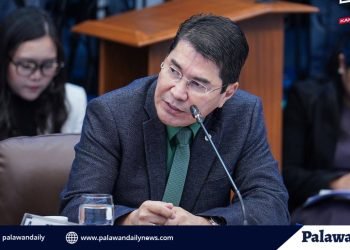
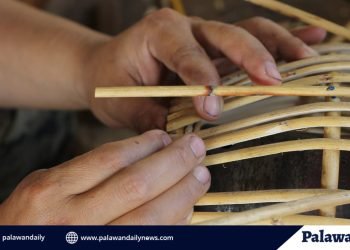
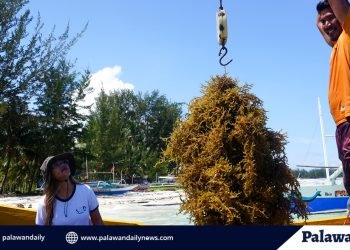
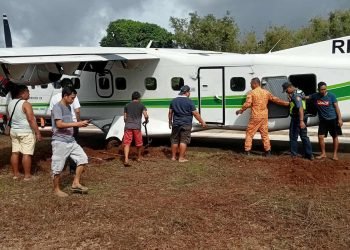
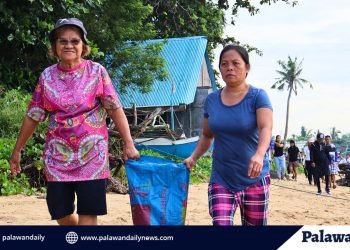









Discussion about this post